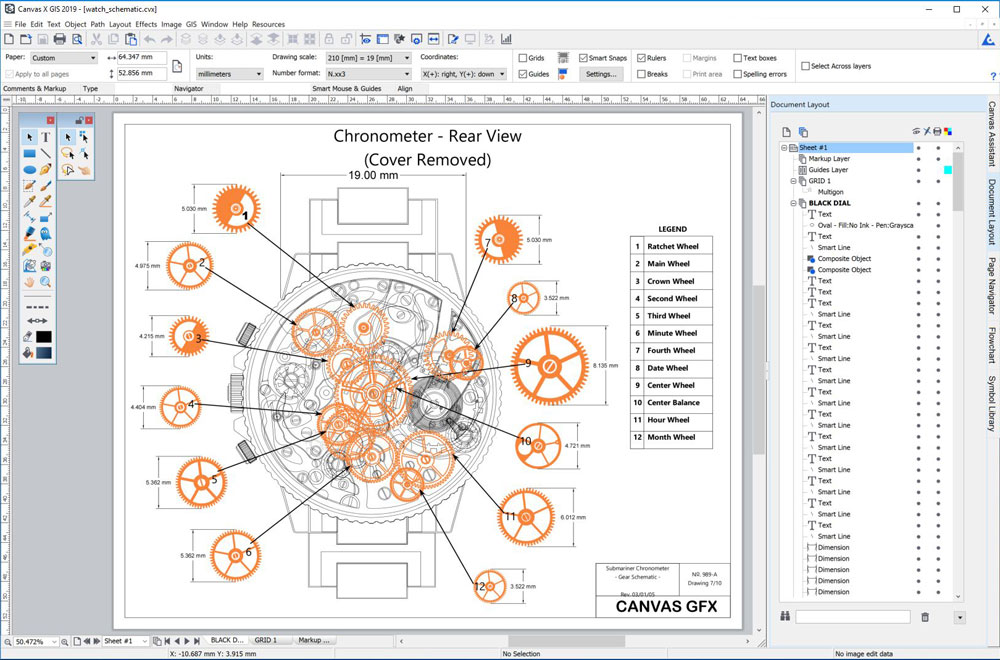A provider of technical illustration software, Canvas GFX, Inc, has released a new product, Canvas X3 CAD Composer, which is described as a bridge between 2-dimensional and 3-dimensional illustration.
It enhances the core Canvas X3 software with the capability to import and edit 3D CAD files. No need to switch between 2D and 3D software.
The CADComposer now provides an integrated design environment so users can combine all 2D and 3D graphical elements and apply high-end effects within a single document, said Patricia Hume, chief executive officer of Canvas GFX, which makes the tool.
With the tool, technical illustrators can import 40 different 3D file types into the Canvas environment, then position, explode, enhance, and annotate these models for use in a variety of 2D assets. Canvas X3 imports all metadata attached to each model, allowing illustrators to document and reference individual model parts for a range of outputs, including a bill of materials.

By giving illustrators the ability to handle 3D models and metadata directly, Canvas X3 CADComposer frees CAD engineers from having to supply many model views for downstream use, which saves them time and allows them to prioritize other activity. It gives technical illustrators and graphic designers the capability to manipulate 3D CAD models without the need for expensive CAD software.
This allows users to use their source CAD files to produce assembly diagrams, maintenance manuals, repair guides, product sheets, marketing material, and more.
The tool can import a great array of 3D CAD, vector, and raster file formats and export many image and vector formats. Users can work with 0.035-micron accuracy. They can show, hide, or ghost any part in their assembly to better focus the viewer. They can also change colors of assemblies to highlight parts within them.
CAD objects can be edited and re-edited as many times as needed. Users can update documents with new versions or changed views by double-clicking an object. Any rendering can be undone.
They can also automatically label parts in their illustration with CAD metadata to quickly create a bill of materials from CAD data that lists all the parts of the assembly. They can intuitively move parts along their axes for exploded views to help viewers understand how multiple components interconnect.
This is the first Canvas product to build on the firm’s partnership with Dassault Systèmes’s subsidiary Spatial.
Canvas GFX looked to Spatial Corp., a provider of 3D software development toolkits for design, manufacturing, and engineering solutions, for enabling technology for 3D import and model visualization. The engineering team at Canvas GFX selected 3D InterOp, a 3D CAD data translation software development toolkit from Spatial, Hume said.
“3D InterOp enables Canvas X3 users to work with imported 3D data as easily as if it were created natively in the Canvas GFX tool. The result is improved workflow efficiency and enhanced user experience,” added said Vivekan Iyengar, vice president of research and development at Spatial.
Canvas GFX and Spatial Corp announced their partnership in May 2019.
